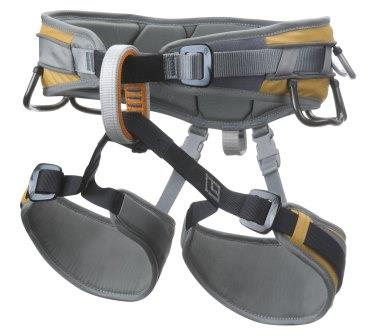Rather than further this irrelevant discussion to the OP
of another thread, let’s continue here.
Roo wrote
I'm not arguing that no force is transmitted around the object, merely that the 100% load at the standing part gets reduced to something below 100% past the entry point.This becomes especially evident when you consider what happens to a Gnat Hitch when it is pre-snugged around an object, causing the legs to spread. This is most easily seen by tying the hitch around a large test fixture and see at what leg angle the hitch stops contracting in free air and starts acting like a standard loop. It’s usually just shy of about 90 degrees.
So in an actual snug condition, instead of free air, we’d expect this balance point to occur even sooner. And indeed, in high load testing of such hitches, it’s not at all unusual to see the knot body to lift off the object and leave a gap, much like a loop.
And Agent_Smith reacted
The gnat hitch must not be used as a tie-in knot to a climbers harness - despite any assertion that a gnat hitch will reach a balance point (equilibrium) and stop cinching like a noose. When tied into a climbing harness, the gnat hitch will act like a noose and cinch up tight - and so during the violent force of a free-fall, significant friction and resultant heat stress will occur to the harness textile material. The impact force of a fall is dynamic - and not a steady acting force - it is a sudden shock load.Tie-in knots for climbing must be eye knots that do not collapse or tighten like a noose. The eye must be fixed.
The use of #409 (Poachers noose) and #1120 (scaffold noose) as termination knots for cows tails lanyard is used extensively in the rope access industry (see my previous link to IRATA code of practice). The noose is formed on a metal carabiner - not a textile harness.
To which Roo challenged :
I will take your lack of photos of the phenomenon you predict as concession that your nylon-melting hypothesis cannot be taken seriously.If you want to be taken seriously, you need to do testing.
And I got searching. Here is my first find, which is of rope
movement WAY more than a hitch will see,
but at forces WAY less than a fall will give --a question
of balance?!
http://www.theuiaa.org/documents/safety/Use_of_slings_when_lowering_off_and_abseiling.pdfIn 5mm cord (how thick harness loops?), of 9mm rope only a meter of "lowering" an 80kg (standard UIAA mass) cut through the sling. (Hmmm, would that there were some Kevlar slings to test!) Thicker slings or rope (11mm) took longer to (be) cut through.
I’m thinking that the clove hitch would fare well worse
than the less-material-to-move gnat hitch (but there might
be some other hitch to play the role I envisioned that would have
less potential movement (e.g., there’s a constrictor-like oddball
in Hansel&Gretel’s Encyclopedia…… (p.98#311, IIRC) !)

